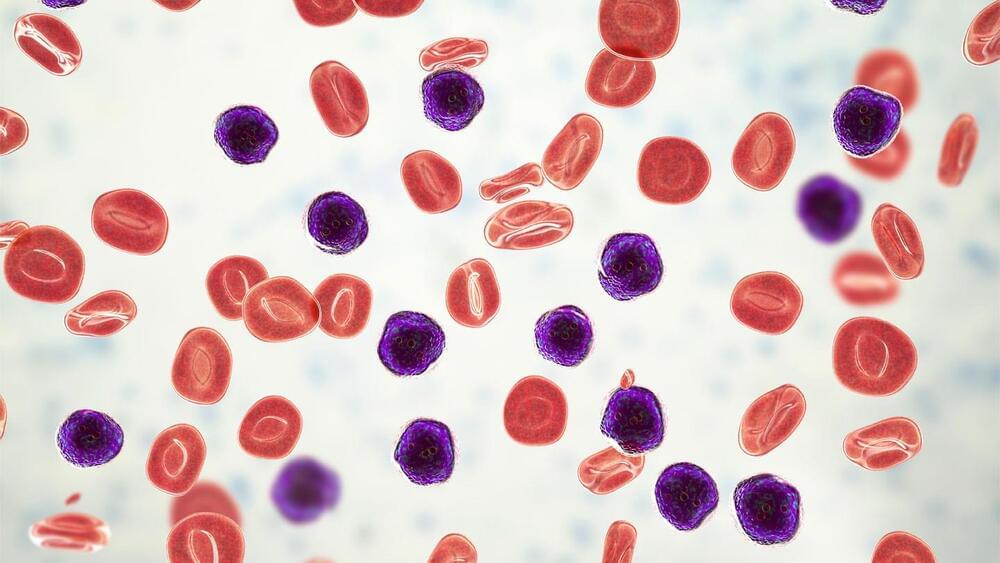Archive for the ‘mathematics’ category: Page 43
Sep 20, 2023
Sweeping Discovery — Scientists Discover a Previously Unknown “Housekeeping” Process in Kidney Cells
Posted by Genevieve Klien in categories: biotech/medical, health, mathematics
Scientists from the University of Texas at Dallas have identified a previously unknown “housekeeping” process in kidney cells that ejects unwanted content, resulting in cells that rejuvenate themselves and remain functioning and healthy.
This unique self-renewal method, distinct from known regeneration processes in other body tissues, sheds light on how the kidneys can maintain their health throughout one’s life in the absence of injury or illness. The team detailed their findings in a study recently published in Nature Nanotechnology.
Unlike the liver and skin, where cells divide to create new daughter cells and regenerate the organ, cells in the proximal tubules of the kidney are mitotically quiescent — they do not divide to create new cells. In cases of a mild injury or disease, kidney cells do have limited repair capabilities, and stem cells in the kidney can form new kidney cells, but only up to a point, said Dr. Jie Zheng, professor of chemistry and biochemistry in the School of Natural Sciences and Mathematics and co-corresponding author of the study.
Sep 19, 2023
A catalog of all human cells reveals a mathematical pattern
Posted by Shailesh Prasad in categories: biotech/medical, mathematics
Smaller cells occur in larger numbers in the human body, and cells of different size classes contribute equally to our overall mass.
Sep 19, 2023
Strange Mathematical Pattern Found in The Cells of The Human Body
Posted by Paul Battista in categories: biotech/medical, mathematics, neuroscience
From the oxygen-carrying corpuscles in our blood to the branching neurons that govern our thoughts, our body is built of a dazzling variety of cells.
Researchers from institutions in Germany, Canada, Spain, and the US have published a comprehensive study of how many individual cells of each type there are in typical bodies.
Based on an exhaustive analysis of over 1,500 published sources, most adult males contain a total of around 36 trillion cells, while adult females tend to have some 28 trillion cells. A 10-year-old child, by comparison, would have in the region of 17 trillion.
Sep 19, 2023
Fact Check: Do Warp Drive Engines Violate the Laws of Physics?
Posted by Shailesh Prasad in categories: alien life, mathematics, physics
The universe is bigger than you think.
This means any deep-space future awaiting humanity outside our solar system will remain beyond the span of a single life until we develop a means of propulsion that outclasses conventional rockets. And, when three studies rocked the world earlier this year, it felt like a dream come true: Warp drive was no longer science fiction, potentially unlocking a theoretical basis to build faster-than-light warp drive engines that could cut a trip to Mars down to minutes.
However, a recent study shared in a preprint journal cast doubt on the theory, pointing to a gap in the math that could put the viability of a physical warp drive back into the realm of speculation.
Sep 19, 2023
Physicists Create New Magnetic Material to Unleash Quantum Computing
Posted by Paul Battista in categories: computing, information science, mathematics, particle physics, quantum physics
Quantum behavior is a strange, fragile thing that hovers on the edge of reality, between a world of possibility and a Universe of absolutes. In that mathematical haze lies the potential of quantum computing; the promise of devices that could quickly solve algorithms that would take classic computers too long to process.
For now, quantum computers are confined to cool rooms close to absolute zero (−273 degrees Celsius) where particles are less likely to tumble out of their critical quantum states.
Breaking through this temperature barrier to develop materials that still exhibit quantum properties at room temperatures has long been the goal of quantum computing. Though the low temperatures help keep the particle’s properties from collapsing out of their useful fog of possibility, the bulk and expense of the equipment limits their potential and ability to be scaled up for general use.
Sep 17, 2023
DeepMind discovers that AI large language models can optimize their own prompts
Posted by Kelvin Dafiaghor in categories: information science, mathematics, robotics/AI
When people program new deep learning AI models — those that can focus on the right features of data by themselves — the vast majority rely on optimization algorithms, or optimizers, to ensure the models have a high enough rate of accuracy. But one of the most commonly used optimizers — derivative-based optimizers— run into trouble handling real-world applications.
In a new paper, researchers from DeepMind propose a new way: Optimization by PROmpting (OPRO), a method that uses AI large language models (LLM) as optimizers. The unique aspect of this approach is that the optimization task is defined in natural language rather than through formal mathematical definitions.
The researchers write, “Instead of formally defining the optimization problem and deriving the update step with a programmed solver, we describe the optimization problem in natural language, then instruct the LLM to iteratively generate new solutions based on the problem description and the previously found solutions.”
Sep 17, 2023
Brain Asymmetry Driven by Task Complexity
Posted by Saúl Morales Rodriguéz in categories: biotech/medical, life extension, mathematics, robotics/AI
A mathematical model shows how increased intricacy of cognitive tasks can break the mirror symmetry of the brain’s neural network.
The neural networks of animal brains are partly mirror symmetric, with asymmetries thought to be more common in more cognitively advanced species. This assumption stems from a long-standing theory that increased complexity of neural tasks can turn mirror-symmetric neural circuits into circuits existing in only one side of the brain. This hypothesis has now received support from a mathematical model developed by Luís Seoane at the National Center for Biotechnology in Spain [1]. The researcher’s findings could help explain how the brain’s architecture is shaped not only by cognitively demanding tasks but also by damage or aging.
A mirror-symmetric neural network is useful when controlling body parts that are themselves mirror symmetric, such as arms and legs. Moreover, the presence of duplicate circuits on each side of the brain can help increase computing accuracy and offer a replacement circuit if one becomes faulty. However, the redundancy created by such duplication can lead to increased energy consumption. This trade-off raises an important question: Does the optimal degree of mirror symmetry depend on the complexity of the cognitive tasks performed by the neural network?
Sep 16, 2023
Life-Changing Cystic Fibrosis Treatment Wins $3-Million Breakthrough Prize
Posted by Shane Hinshaw in categories: biotech/medical, mathematics
A trio of scientists who developed the combination drug Trikafta are among the winners of five major awards in life sciences, physics and mathematics.
Sep 16, 2023
If you’d bought Apple shares instead of iPhones, you’d now have $147,000
Posted by Gemechu Taye in categories: mathematics, mobile phones
What would happen if, instead of buying the newest iPhone every time Apple launches one, you bought that same amount of Apple stock? There is a tweet floating around saying that if you had bought Apple shares instead of an iPhone every time they came out, you’d have hundreds of millions of dollars. The math is off (if you’d spent $20k on Apple stock when the rumors of the iPhone first started, you’d have $1.5 million today, at best) but in any case – it’d only make sense if you were clairvoyant in 2007, and knew when Apple would be launching phones, and at which price.
I figured a more fair way of calculating it would be to imagine buy a top-of-the-line iPhone every time Apple releases a new iPhone, or spend the same amount on Apple stock. If you had done that, by my calculations, you’d have spent around $16,000 on iPhones over the years (that’s around $20,000 in today’s dollars). If you’d bought Apple shares instead, you’d today have $147,000 or so — or a profit of around $131,000.


















